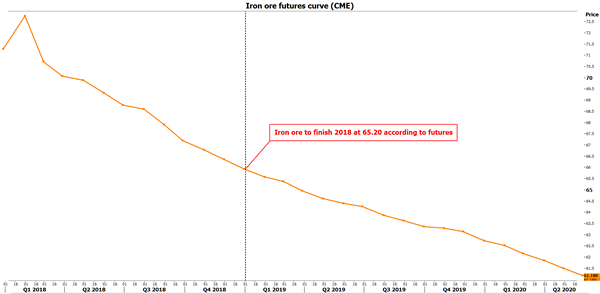The aussie enjoyed a decent run in 2017, but it is an open question if this will remain the case in 2018. Expectations for declines in iron ore prices and the prospect of a notable slowdown in the Chinese economy suggest that the risks surrounding the AUD over the coming year may be tilted to the downside. That said, many variables could change that and spell good news for the currency, including a potential hawkish shift in the RBA’s language.
The Australian dollar is set to finish 2017 slightly higher against a basket of major currencies, despite the drop in iron ore prices and the Reserve Bank of Australia (RBA) showing no signs that it is ready to raise rates anytime soon. What are the future catalysts for the AUD, and how is it likely to fare in 2018?
Monetary policy may be the single most important variable to watch, with any change in the RBA’s neutral tone likely to trigger massive movements in the aussie. The market currently sees roughly a 60% probability for a quarter-point rate increase by the end of 2018, according to Australia’s overnight index swaps. However, for the RBA to begin hinting at rate hikes, wages need to accelerate substantially first, something that appears doubtful given there is still slack in the labor market. The Bank is also concerned about consumption growth, as household debt levels are already very high. Thus, it remains largely a guessing game as to whether rates will rise in 2018. Staying on hold would likely come as a disappointment since market pricing is leaning more towards a hike, and could prove AUD-negative.
Turning to iron ore, Australia’s largest export, the outlook for prices appears rather gloomy. According to futures contracts on the Chicago Mercantile Exchange (CME), market participants are anticipating a sizeable drop in prices over 2018, something in line with the latest price forecasts from Thomson Reuters. In isolation, a fall in iron ore prices usually works against the Aussie, as it implies reduced revenues for Australian exporters and less demand for the AUD itself.

What happens in China will also be crucial for the aussie. The consensus among the economics community seems to be that Chinese growth is set to slow as the nation restricts credit in order to deleverage the economy and address financial stability risks. A slowdown in Australia’s largest trading partner could also exert downward pressure on the AUD, as export growth would likely take a hit. Bearing all the above in mind, the risks surrounding the AUD in 2018 may be tilted to the downside. Aussie/dollar could drift lower and perhaps target the 0.7330 territory, marked by the lows of May. On the other hand, a more optimistic tone by the RBA, a less pronounced slowdown in China, or rising iron ore prices could all trigger advances. In such a scenario, the pair may aim for the 0.8100 zone.













